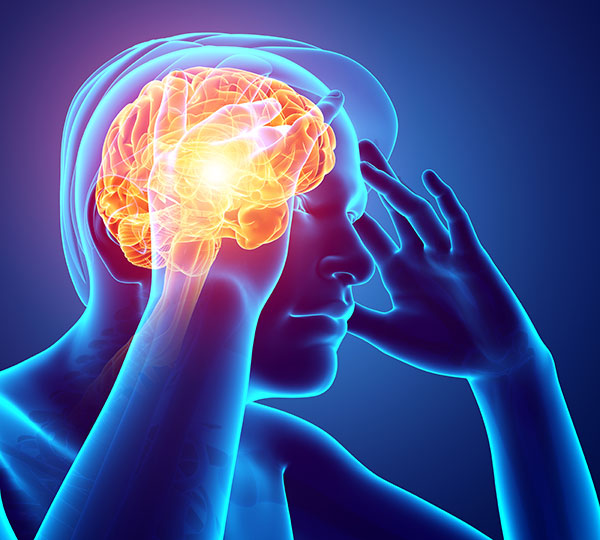Masticatory Muscle Disorders
Muscle Pain Limited to the OroFacial Region
Overuse, chronic involuntary contraction (clenching/dystonia) and/or ischemia of a normal muscle can cause pain. There are also several systemic neuromuscular disorders that cause muscle deterioration and pain, including muscles in the orofacial region.
Examples of painful systemic neuromuscular disorders modulated by the immune system include: Polymyalgia Rheumatica (PMR), Polymyositis (PM) , Dermatomyositis (DM), Rhabdomyolysis (RM), Systemic Lupus Erythematosus (SLE), and Fibromyalgia Syndrome (FMS.)
Myalgia (Muscle Pain)
The most common muscle pain complaint in the jaw area is localized dull aching, aggravated by normal jaw function, parafunction (jaw clenching/teeth grinding) or jaw trauma. The muscle pain is usually associated with tenderness/pain to palpation at one or more jaw muscle sites. Management of Myalgia focuses on relaxation of the painful muscle(s), muscle stretching, increasing blood flow to and from the muscle(s), pain management and control of the etiologic/aggravating/perpetuating factors.
Myofacial Pain Disorder (MPD)
MPD involves pain of muscle origin, as defined in Myalgia, plus distinct palpable nodules/points (Trigger Points) or zones (Trigger Zones) that refer pain along a predictable pattern, beyond the boundaries of the muscle being palpated. The diagnosis of MPD can only be in patients that have Myalgia.
For example, a Masseter Muscle Trigger Point can refer pain to the Mandibular Posterior Teeth on the same side, with the teeth often feeling more pain than the Masseter Muscle.
Tendonitis
This condition involves pain, inflammation and deterioration of tendon origin, affected by tension on the tendon from contraction of the muscle it attaches to. Pain and inflammation in the tendons attached to a joint usually cause limited range of motion of the joint. The Temporalis Tendon and Upper Trapezius Tendon are common sites of inflammation and pain (Tendinitis). With Temporal Tendinitis, there is often referred pain to the Maxillary Posterior Teeth, Maxillary Sinus, behind the Eye, inside the Ear, TMJ, Temporalis Muscle/Temple and Lateral/Posterior Neck on the same side. Temporal Headache is often associated with Temporal Tendinitis. In Upper Trapezius Tendinitis, there is often referred pain down the Back, onto the Shoulder, pain in the Occipital Area, and up the back of the Head. The Greater Occipital Nerve exits the spine and passes up through the Temporalis Tendon, as it travels up the back of the skull. Trapezius Tendonitis can entrap and compress the Greater Occipital Nerve, resulting in Occipital Neuritis pain, often misnamed Occipital Neuralgia. This distinct pain referral travels up the back and over the top of the Head, terminating in the Frontal area, over the eyes. Occipital, Cervicogenic and/or Frontal Headaches are often associated with Upper Trapezius Tendonitis.
Tendinosis/Enthesopathy
This condition is very similar to Tendonitis, with similar pain and referral patterns, except there is no inflammation present in Tendinosis. Tendinosis is usually found at the tendinous attachment of the bone(s) the muscle attaches to. The specific area where the tendon fibers attach to the bone, is called the Enthesis. At the Enthesis, the collagen fibers of the tendon inserts into very small holes in the bone. These tendon fibers contain numerous nerve endings that transmit pain (nociceptors) and muscle tension/contraction forces (mechanoreceptors). With acute trauma and/or chronic tension on the Enthesis fiber attachments, the fibers can be overstretched (strained/sprained), torn or pulled away from the fibrous-bone attachment, causing a pathological condition calledEnthesopathy. Enthesopathies are usually not inflamed and are very painful. Similar to all tendons and ligaments, there are no blood vessels present in the enthesis structures, making healing very slow, or in many cases, no healing with chronic pain.
Myositis
This condition is an acute painful generalized inflammation usually of the entire muscle, which results from infection, overuse or trauma. There is often painful swelling of the muscle, with limited range of motion. Myositis has the clinical characteristics of inflammation edema, erythema, and/or increased temperature.
Spasm
Muscle spasm is a clinical entity described as sudden, involuntary, painful contraction of the masticatory muscle characterized by acute severe pain and limitation of range of movement. Acute changes in bite may be present with spasms on masticatory muscles.
Jaw Movement Disorders
Orofacial/Oromandibular Dyskinesia and Dystonia are the most common jaw/facial movement disorders. Orofacial dyskinesia involves involuntary movements that may involve the face, lips, tongue and/or jaw. These disorders may result in traumatic injury to the oral mucosa, tongue or teeth. Dyskinesias are more common with advancing age and in patients with a history of using neuroleptic medication, associated with traumatic brain injury, psychiatric conditions, or other neurologic disorders. Myalgia of facial muscles and arthralgia of the TMJ may be present. Oromandibular dystonia involves excessive, involuntary and sustained muscle contractions that may involve the face, lips, tongue and/or jaw muscles. Dystonia could be a symptom of several central nervous system disorders. Acute trauma to the brain, head, and neck can trigger the onset of transient or permanent dystonia of the masticatory muscles. The affected muscles are often painful and can make opening and closing the mouth difficult, impair speech, swallowing and chewing.

